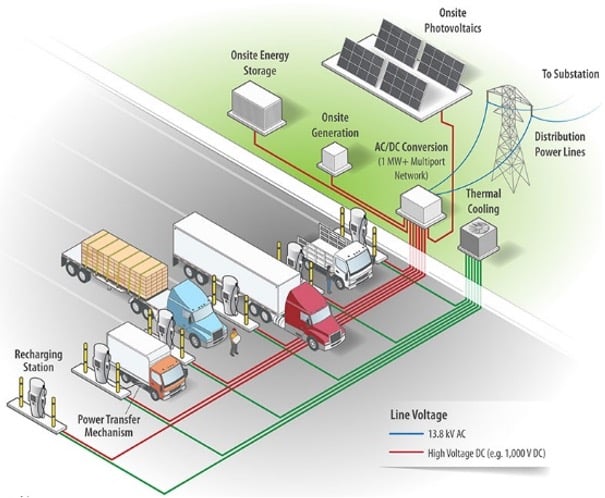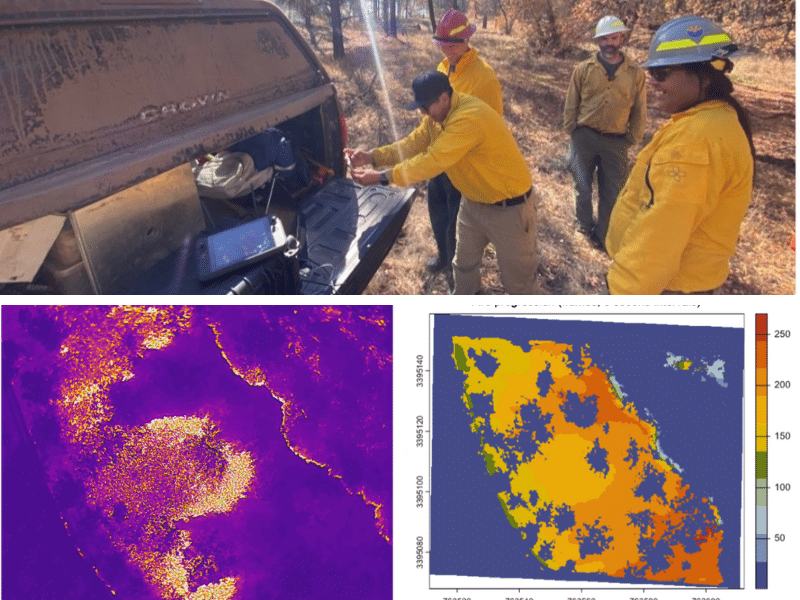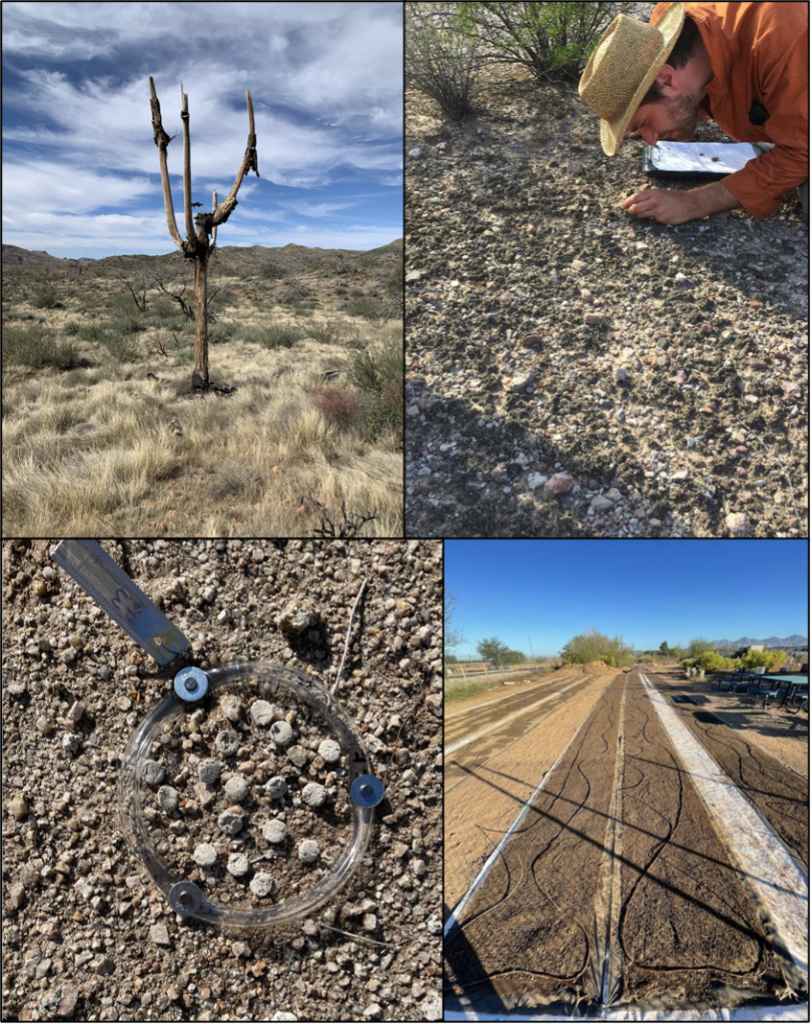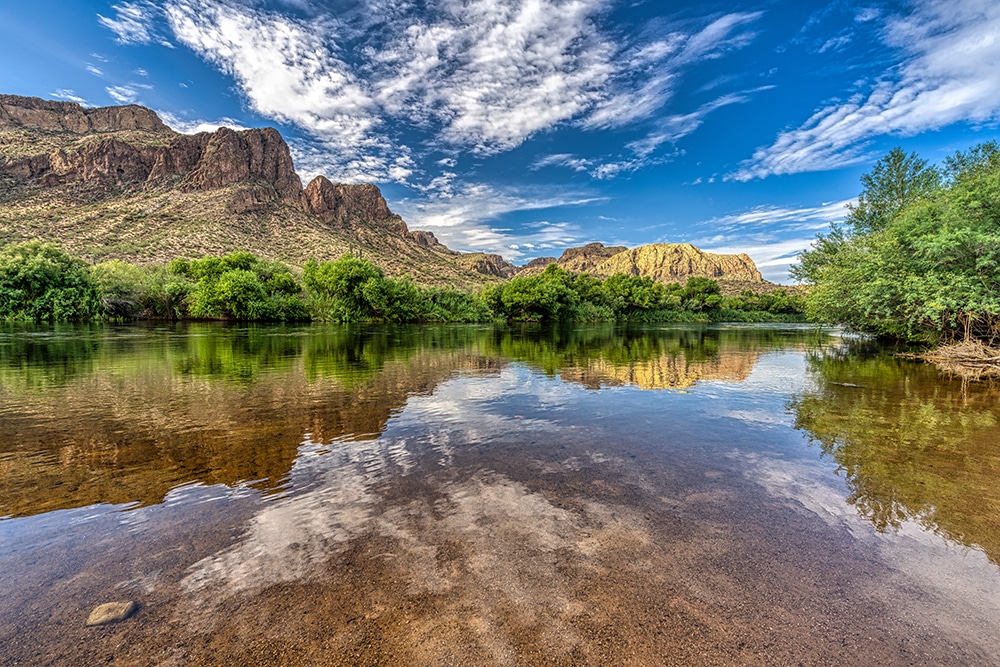A long-term partnership between Northern Arizona University and the Salt River Project is providing innovative solutions to the critical questions surrounding the power and water grids in Arizona. Researchers, including both graduate and undergraduate students, examined a variety of ways to protect water quality, especially as it related to wildfire, how to build an electrical grid that can handle the load of electric vehicles and the importance of rehabilitating the “living skin” in desert ecosystems that have been overrun by invasive plants.
Learn more about the SRP-funded projects:
The impact of commercial EVs on the electrical grid

Electric fleets and buses are the wave of the future, but we are still defining the impact these larger vehicles, and their larger charging needs, will have on the electrical grid. Professors Truong Nghiem and Venkata Yaramasu, along with graduate students Yujian Huang and Tung Nguyen, developed prediction models of the charging behaviors and usage patterns of commercial EVs to help SRP better determine how much electricity is needed to keep these vehicles charged while maintaining a reliable power grid.
Using drones and infrared imaging to identify water loss in underground pipes
Loran Call and Scott Mesoyedz, master’s students from the Department of Mechanical Engineering, tested the viability of thermal-based water leakage detecting of SRP’s cast-in-place-pipes (CIPPs). Pinpointing cracks and leaks can be difficult, although this practice is vital for ensuring efficient water delivery. These pipes transport water from the canals to a variety of customers, including city water treatment plants, before they supply drinking water to nearly 2.5 million homes. Using drone-based infrared imagery, the students were able to detect heat signatures from abnormal surface soil moisture from leaking pipes without shutting the pipeline down for inspections. It’s an important first step in fixing or replacing leaking pipes, which could help save water in SRP’s service territory. The group is embarking on a second phase of this project, which will include further drone tests and using software to analyze the aerial imagery for indications of leaks.

Using drones to quantify the usefulness of prescribed burns
Prescribed burns are one of the major tools used to reduce the risk of severe wildfire, which is the fastest-acting threat to the conservation and stability of watersheds critical to SRP´s mission. Forestry professor Peter Fulé, grad students Leo O’Neill and Erik Carrieri and undergraduate student Tracey Begaye studied the use of drones to evaluate whether prescribed burns are achieving their goals, which will help fire managers make informed decisions on where and when to conduct prescribed burns.
Addressing the future need for better EV charging infrastructure today
Yaramasu and Nghiem also led a project examining the potential risks of clusters of EVs charging simultaneously, which could overwhelm the grid or increase costs of providing the necessary electricity. Along with grad students Nguyen and Deep Trivedi, they studied the growth of charging infrastructure and produced simulations to study how EV charging works with solar and storage in flattening total electric load, reducing energy costs and impacting SRP’s distribution grids. This will help to ensure the appropriate infrastructure, at both the consumer level and the grid level, is in place as the number of EVs on the road increases.
Streamlining forest restoration priorities in the Southwest

Fire and forest managers have a host of tools available to help them understand risk from wildfires—so many that, in the stress of wildfire response, the options can be overwhelming. NAU researchers Tristan O’Mara, Andrew Sánchez Meador, Amy Waltz and Melanie Colavito and Elvy Barton from SRP created a classification framework that presents tools based on their functionalities, intended uses and the wildfire risk objectives they address with the goal of having the right tools available for managers to make informed decisions about forest restoration priorities and reducing wildfire risk.
Rehabilitating the Sonoran Desert’s ‘living skin’
Increasing grass fires in the Sonoran Desert has led to degraded surface water quality in the Salt River watershed, which is a water source for more than 2.5 million people in central Arizona. Biocrusts, or a “living skin” composed of organisms like cyanobacteria, lichens and mosses, are critical to help restore soil surfaces, which will help protect water quality after a wildfire. Researcher Matthew Bowker and graduate students Keven Griffen and Nelly McCuistion partnered with researchers at Scottsdale Community College and citizens scientists to create “biocrust sods,” aimed at reducing erosion and discouraging recolonization of exotic grasses, which will go into burned areas in the Tonto National Forest this fall.
Ecohydrological monitoring of Upper Verde thinning impact
Mechanically thinning overgrown and unhealthy forests has many benefits to forest health and water resiliency. During times of severe drought and climate change, these thinning efforts can be a valuable tool in helping SRP ensure reliable water supplies for the Valley. NAU researchers Teki Sankey, Salli Dymond, Jackson Leonard and Southwest Watershed Research Center researcher Joel Biederman will quantify the impacts of forest thinning on water supplies in the Upper East Verde watershed by installing ecohydrological monitoring equipment to assess long-term trends of precipitation, snowpack, soil moisture, evapotranspiration, vegetation dynamics, streamflow and water quality.



